Birth and evolution

PWS 1 three seats naval observatrion floatplane ()
The Naval Air Squadron (Morski Dywizjon Lotniczy) was a unit of the Polish Air Force created inthe interwar, formed in 1920 in Puck. In 1939, it was split between the Long Range Reconnaissance Escadrille (I Eskadra Dalekiego Rozpoznania) and Short Range Reconnaissance Escadrille (II Eskadra Bliskiego Rozpoznania). Puck air base was bombed by Nazi Germany at 5.20am (Polish time) on Friday September 1 1939 by the Luftwaffe, dealing significant damage to the Polish air force stationed there.
Favorable conditions in Puck (bay, flat shore) motivated already the German Empire to establish a Naval aviation research station there in 1911/1912. In 1913 a first naval division was established. But after Poland regained independence and occupied Puck (February 10, 1920) the area was thought perfect and further developed. Thge Poles created a new larger ensemble of barracks, a take-off field and new hangars as well as a pool for seaplanes. Several worn-out seaplanes were also seized and soon sailors from the 1st Marine Battalion were hosted there. By February 10, 1920 under the commander of the 1st Marine Battalion, an aviation platoon was created under command of Capt. pil. Wiktoryn Kaczyński. On May 27, 1920 he started organize a training squadron.

The whole Polish Aviation array in 1939 (pintetest)
The first seaplane there was a single rebuilt FF.33h flying on July 15, 1920 by Andrzej Zubrzycki. In August, two more of these and a single FF.49 and several Lübeck-Travemünde F4 were purchased in Gdańsk. later these were a few Hansa-Brandeburg NW and Sablatnig SF-5 seaplanes and also a defensive ground-base forced composed of surplus Fokker D.VII and Albatros B.II was alro setup.
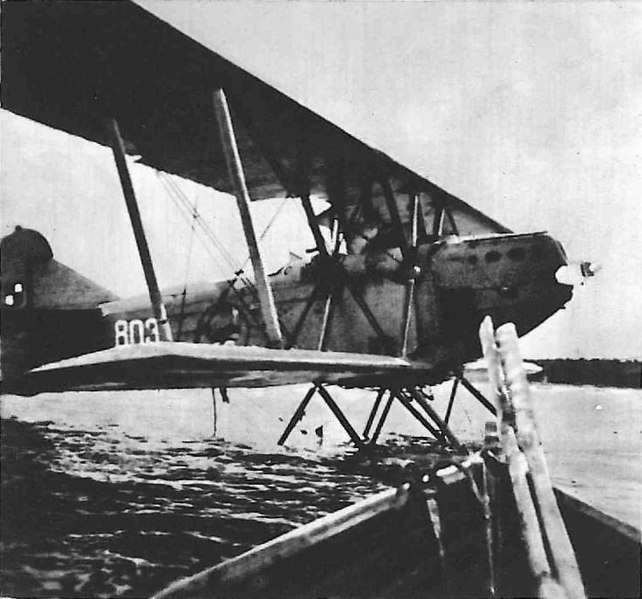
Lublin_RVIII_1939
In the summer of 1921, the Department of Maritime Affairs mandated the Polish Purchasing Mission to purchased in Italy some seven FBA S-4 training seaplanes dating back from 1917 as well as six Nieuport-Macchi M 9 reconnaissance planes. They were delivered by sea to Gdańsk on board the Rosa Alba. In August, they arrived in parts by rail to Puck and were reassembled. Due to the lack of technical personnel and worskhops at the time, this was delayed to June 1922, thanks to an Italian team. But between wear and tear and long storage, the Poles just cancelled the orderfor the FBA S-4 aircraft, whereas the Nieuport M.9 seaplanes were allowed for operation but in limited and "gentle" way. The first M.9 flew piloted by Adolf Stempkowski and they all remained into service until 1926.
In November 1921, the Base and Pilots' School were fused into the "Naval Aviation" subordinated to Coastal Defense Command in Puck. On May 15, 1922 it fell under the commander of the 2nd Aviation Regiment in Kraków, with the Intelligence Squadron. On August 15, 1922 during the anniversary parade of the "Miracle on the Vistula" a mid-air collision and crash led 8 dead and many injured. In mid-1923, the the "Naval Aviation Squadron" fell under the 4th Department of Air Navigation, Military Affairs and Fleet Commander. There was another loss on October 6, 1923, in the Bay of Puck, as a worn out Nieuport Macchi M 9 broke in half in flight.
Late 1920s modernization

Lublin R.XIII ter/Hydro and Schreck FBA-17HE2 at Puck.
In 1924–1927 France was contacted for four LeO H.13B flying boats arriving in March 1925 and seven LeO H.135B3 amphibians, from 1927, four CAMS-30E training and liaison flying boats and eight Latham 43HB3 twin-engine bomber-patrol flying boats plus sixteen Schreck FBA-17H amphibious training and liaison boats. They replaced worn out Macchi and beefed up considerably the capacities of the new squadron.
In 1927, there were enough planes to constitute a training squadron, a close reconnaissance squadron, a long reconnaissance and bombing squadron, a communications platoon, a photogrammetry platoon. There was also a auxiliary administrative unit. Then FBA-17s were detached with personnel to create the Independent River Seaplane Air Platoon in Pinsk, (later: River Air Squadron). By December 23, 1929, the organization changed on a peacekeeping basis in grades and personal promotions. In 1931 it was decided to modernize and unify the Division and this time, based on domestic design.
Experimental LWS-5 Zubr (Bison)
Initially four Lublin R.VIII bis hydro and ter hydro were purchases, soon followed by a few Lublin R.XIII bis. In 1932 the first four R-XIII bis/hydro were followed by mid-1934, by ten more ter/hydro with metal floats. A year later, the third R-XIII G batch arrived, with 6 models fitted with a twin rudder and adjustable metal propellers. Training was now assumed by five Bartel BM-5 aircraft. On December 9, 1932, the squadron was incorporated into the Navy (Marynarka Vojenna) and by 1934 it comprised a 1st and 2nd line squadrons, the IV. training squadron, an headquarters platoon and the same river air squadron seen above.
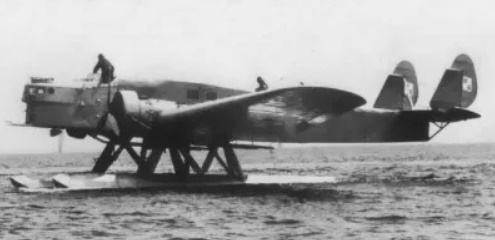
There was no longer a torpedo squadron. Tests with the Lublin R-XX two-engine monoplan all-metal floatplane and the competing LWS-5 and RWD-22 failed to meet requirements. It was decided to purchase the Italian seaplane CANT Z.506 B instead; By July 30, 1938, a contract was signed for six of these. But just one reached Poland and it flew by August 27, 1939 from Italy to Puck, via Yugoslavia, Hungary and Slovakia. The squadron back then still had 31 aircraft, several SAR/plane guard cutters and the target ship ORP "Ślązak".
The Naval Air Squadron (Morski Dywizjon Lotniczy) was composed of two squadrons of seaplanes, both based in Puck and commanded by Lieutenant Commander Edward Szystowski. The squadron consisted of roughly 17 obsolete planes (mostly Lublin R-VIII and Lublin R-XIII Hydro of various versions), three liaison planes (one RWD-14 Czapla and two RWD-17), and a single modern CANT Z.506 Airone, purchased in Italy.
Both squadron were to provide reconnaissance for the ships of the Polish Navy, while the fighter cover was to be provided by the organic squadrons of the Army Pomorze fighting in southern Pomerania. However, the Naval Air Squadron was mostly destroyed on the ground on September 1, with its commander being the first Allied naval officer to be killed in action in World War II.
WW2 Operations

Lulblin R.XIII ter/Hydro at Puck Naval Air Base 1939, nice diorama by Adam Kawalec on pinterest.
When the war broke out the Polish Naval Aviation comprised a single long-range reconnaissance squadron and a single close reconnaissance squadron. The training squadron was disbanded, equipment and personnel were assigned to the 1st and 2nd squadrons. They were located in Rumia and featured the RWD-8, RWD-13 in addition to Lublin R-XIII D under orders of the Land Coast Defense Command with a 285 perosnal, 15 pilots, 10 observers and 10 gunners. The 1st squadron flew two 2 Lublin R-VIII ter, the single CANT Z.506B and the 2nd squadron had 10 Lublin R-XIII ter plus six Lublin R-XIII G.
The destruction of both reconnaissance Squadrons
On September 1 around At 6.00AM, 20 Heinkel He 111 bombers flattened the base in Puck, destroying the barracks and ammunition warehouse and killing the commander Edward Szystowski and many NCOs and privates while it was reported the destruction of several seaplanes, whic was never confimed. The evacuation of seaplanes to Jurata, furtjer away in the Bay of Puck, shores of the Hel Peninsula in large intervals (but un-camouflaged) were supposed to protect them from an attack. On September 2, the CANT Z.506B seaplane (Capt. Roman Borowiec) flew to Lublin and Lake Siemień, near Parczew, via the Vistula.
On September 9, 1939, it was damaged while there, stayed stuck until on the 11th. New squadron commander, 2nd Lt. Cmdr. pil. Kazimierz Szalewicz proposed using seaplanes for reconnaissance and attack the battleship "Schleswig-Holstein" shelling the Westerplatte. This was however denied by the fleet commander. They remained without any mission. The Germans then found the location and raided the Polish seaplanes on September 3, all being damaged by machine fire, leaving a single Lublin R-XIII G (No. 714) operational. On September 6, it took off, piloted by Lt. Mar. pil. Józef Rudzki to the Bay of Gdańsk.
On September 7 at 21.00, it took off with 75 kg bombs without orders, to try finding and attacking the battleship Schleswig-Holstein but failed. They bombed and fired machine guns at the celebrating local German population at a night parade. While flying back to safety they spotted the German battleship, Schlesien near Gdynia, but they had no more bombs and were short on petrol, unttimately ditching in Jurata.

RWD 17W seaplane trainer
On September 8, early morning, a German air raid comperehensively attacked and destroyed all remaining floatplanes in Jurata, except for the unique RWD-17W, hidden in the forest. Impoddible to repair, their machine guns were removed and they were left to rot. The whole unit was disbanded, its personnel took part in the fighting in two Companies as well as an Anti-landing Unit. On September 30, two officers flew the remaining RWD-17W to Sweden, but it crashed 15 km from the Polish coast due to engine failure.
1st Polish Maritime Bomber Squadron in Italy
 On August 30, 1939, Capt. Antoni Wacięga handed over his commander duties to Marian Janczewski. With five NCOs he left by train for Warsaw to meet the Navy admiralty and receive instruction. He was tasked to fly extra Cant seaplanes not delivered from Italy to Poland. On September 3, he went to Parczew to prepare a base for these Cant seaplanes on Siemień Lake.
On August 30, 1939, Capt. Antoni Wacięga handed over his commander duties to Marian Janczewski. With five NCOs he left by train for Warsaw to meet the Navy admiralty and receive instruction. He was tasked to fly extra Cant seaplanes not delivered from Italy to Poland. On September 3, he went to Parczew to prepare a base for these Cant seaplanes on Siemień Lake.
On September 5, he flew on a Polish Airline plane to Budapest and joined Italy by train. On September 7 he was in Monfalcone to report his orders to the seaplane acceptance commission under Capt. Feliks Baczyński. By order of the military attaché in Rome, Col. Marian Romeyko was placed at the head of the new 1st Polish Maritime Bomber Squadron tasked of seaplane acceptance and operation.
Captain Baczyński became squadron commander. However after October 18, the squadron moved to Grignano near Trieste. There were 16 aviation NCOs evacuated from camps in Hungary that were incorporated into the squadron. They trained in Grignano, while learning English, intended to leave for UK. On January 10, 1940, the squadron left through France for England and arrived by January 14 in London. While in Grignano, the squadron's amounted to 5 officers, 7 naval NCOs and 16 military masters. It was later recycled into a coastal bomber command squadron, one of 14 of such squadrons in exile.
The Cold War
After World War II, on 7 July 1945, the new Soviet-imposed Communist government revived the Polish Navy headquartered in Gdynia and this was soon accompanied with a great buildup, notably with separate amphibious forces and Polish Marines. Polish shipyards added their weight to soviet-acqyired ships, ranging from missiles destroyers to submarines. The Navy was tasked of Baltic Sea control and amphibious operations along the coastline, but there was no defined naval aviation. It was limited to a squadron of reconnaissance and multirole helicopters.
In 1991, the Polish Naval Aviation adopted the W-3RM Anakonda Navalized search and rescue version of the 1979 W-3 Sokół. One prototype and eight production aircraft were built from 1991 to 2002. They were modernized and two more added of the W-3WARM Anakonda until 2020. It joined already purchased Kaman SH-2 Seasprite and helped to retire worn out Mil Mi-3 and the dedicated naval helicopter Mi-14 "haze". Possibly also the Mi-4 "hound" was used by the Polish Marines. The LL-28 "beagle" remained a potential maritime bomber if need be, but no seaplane was adopted.
About the Brigade Lotnictwa (1994)
The Gdynia Naval Aviation Brigade was named after Cmdr. lieutenant pil. Karol Trzaska-Durski (BLMW) which created the tactical aviation association of the Navy. The command is located today at the military airport in Gdynia in Babie Doły, while subordinate units are located in Gdynia, Darłowo and Siemirowice.In accordance with the order of the Chief of the General Staff of the Polish Army of July 27, 1994, the existing naval aviation regiments and squadrons were transformed into aviation squadrons and security battalions and subordinated to the Naval Aviation Brigade Command in Gdynia, established on November 1, 1994. By January 1, 1995, the following were disbanded in Gdynia: 34th Fighter Aviation Regiment, 18th rescue and liaison aviation squadron, 42nd Field Aviation Workshops
New ones were formed: 1st Puck Air Squadron, 42 technical squadron, 3rd Navy Security Battalion.
On July 1, 1995, the 40th anti-submarine and rescue helicopter squadron was disbanded and instead were created the 2 Darłowski Air Squadron and 4th Security Battalion.
On January 1, 1996, the 7th Special Aviation Regiment of Siemirowice was disbanded and instead the 3rd Kashubian Air Squadron and 5th Security Battalion were created.
The Naval Aviation Brigade was to consolidate the structure of Polish naval aviation. It was established further on July 14, 1995, receiving the distinguishing name "Gdyńska" and the name of Cmdr. lieutenant pil. Karol Trzaska-Durski. By decision of the Polish MoD on January 21, 2002, another reorganization was carried out in which divisions were transformed into squadrons and security battalions/technical division going into newly formed air bases. By January 1, 2011, it underwent another restructuring with all air bases concentrated in two naval aviation bases with three air squadrons disbanded at the end of 2010.
On June 23, 2015, identification marks of the Naval Aviation Brigade Command were introduced as dress uniforms. In 2017, the brigade had to create a Polish Military Contingent as part of the EUNAVFOR MED. On February 12, 2018, the first rotation of the SOPHIA National Electoral Commission was made and February 14, 2018, the main forces were moved to the mission area. The service uses the M28B 1R Bryza patrol and reconnaissance aircraft (44th Naval Aviation Base) as of March 31, 2020, EUNAFOR MED Operation SOPHIA ended. From April 1, 2020, the 4th rotation of SOPHIA under EUNAFOR MED IRINI and the 9th rotation was ongoing until February 23, 2024).
In 2020, the brigade was tasked with forming another contingent for a NATO operation called TAMT (Tailored Assurance Measures for Turkey). It departed on April 20, 2021, for a first rotation in Gdynia. It also uses M28B 1R aircraft and the 6th rotation of the National Electoral Commission started by December 2023. On November 10, 2023, commander, pil. Andrzej Szczotka received the honorary distinction "Leading Unit of the Polish Army" and "for achieving the best results in service activities in 2022" by the MoD.
Composition
Gdynia Naval Aviation Brigade "Commander Pilot Karol Trzask-Durski" based in Gdynia-Babie Doły:Brigade Command
43rd Oksywie Naval Air Base "Commander Edward Stanisław Szystowiski" in Gdynia-Babie Doły (personnel and equipment from 28th Naval Aviation Squadron)Air Group
- 4 transport aircraft An-28TD (0703 and 1003) and M28B (1117 and 1118):
- 4 shipborne ASW helicopters Kaman SH-2G Super Seasprite (3543, 3544, 3545 and 3546)
- 6 SAR helicopters W-3WARM Anakonda (0505, 0506, 0511, 0813, 0815 and 0906)
- 2 training and liaison helicopters Mi-2D (5245) and Mi-2R (5348)
- 44th Kaszubian-Darłowo Naval Air Base in Siemirowice:
-
Kaszubian Air Group in Siemirowice:
- 7 maritime patrol aircraft M28B-1R Bryza M28B-1R (1006, 1008, 1017, 1022, 1114, 1115 and 1116)
- 1 maritime patrol and submarine detection aircraft M28B-1RM/BIS Bryza (0810)
- 2 environmental monitoring aircraft An-28E (0404 and 0405)
- 2 SAR helicopters Mi-14PŁ/R (1009 and 1012)
- 8 ASW helicopters Mi-14PŁ (1001, 1003, 1004, 1005, 1007, 1008, 1010 and 1011)
- SAR helicopters W-3WARM Anakonda (0209 and 0304)
- 2 training and liaison helicopters Mi-2R (5828 and 5830)
Interwar and WW2 Models
(To come)Cold War Models
Read More and Sources
links
pl.wikipedia.org/wiki/Morski_Dywizjon_Lotniczyaeroflight.co.uk
ww2incolor.com
commons.wikimedia.org
wojsko-polskie.pl
wojsko-polskie.pl
pl.wikipedia.org
- Lohner E (1913)
- Macchi M3 (1916)
- Macchi M5 (1918)
- Ansaldo ISVA (1918)
- Sopwith Baby (1916)
- Short 184 (1916)
- Fairey Campania (1917)
- Sopwith Cuckoo (1917)
- Felixstowe F.2 (1917)
- Friedrichshafen FF 33 (1916)
- Albatros W4 (1916)
- Albatros W8 (1918)
- Hanriot HD.2
- Grigorovitch M5
- IJN Farman MF.7
- IJN Yokosho Type Mo
- Yokosho Rogou Kougata (1917)
- Yokosuka Igo-Ko (1920)
- Curtiss N9 (1916)
- Aeromarine 39
- Vought VE-7
- Douglas DT (1921)
- Boeing FB.5 (1923)
- Boeing F4B (1928)
- Vought O2U/O3U Corsair (1928)
- Blackburn Blackburn (1922)
- Supermarine Seagull (1922)
- Blackburn Ripon (1926)
- Fairey IIIF (1927)
- Fairey Seal (1930)
- LGL-32 C.1 (1927)
- Caspar U1 (1921)
- Dornier Do J Wal (1922)
- Rohrbach R-III (1924)
- Mitsubishi 1MF (1923)
- Mitsubishi B1M (1923)
- Yokosuka E1Y (1923)
- Nakajima A1N (1927)
- Nakajima E2N (1927)
- Mitsubishi B2M (1927)
- Nakajima A4N (1929)
- CANT 18
WW1
✠ K.u.K. Seefliegerkorps:
 Italian Naval Aviation
Italian Naval Aviation
 RNAS
RNAS
 Marineflieger
Marineflieger
 French Naval Aviation
French Naval Aviation
 Russian Naval Aviation
Russian Naval Aviation
 IJN Air Service
IJN Air Service
 USA
USA
Interwar
 Interwar US
Interwar US
 Interwar Britain
Interwar Britain
 Interwar France
Interwar France
 Interwar Germany
Interwar Germany
 Interwar Japan
Interwar Japan
 Interwar Italy
Interwar Italy
- Curtiss SOC seagull (1934)
- Grumman FF (1931)
- Curtiss F11C Goshawk (1932)
- Grumman F2F (1933)
- Grumman F3F (1935)
- Northrop BT-1 (1935)
- Grumman J2F Duck (1936)
- Consolidated PBY Catalina (1935)
- Brewster/NAF SBN-1 (1936)
- Curtiss SBC Helldiver (1936)
- Vought SB2U Vindicator (1936)
- Brewster F2A Buffalo (1937)
- Douglas TBD Devastator (1937)
- Vought Kingfisher (1938)
- Curtiss SO3C Seamew (1939)
- Douglas SBD Dauntless (1939)
- Grumman F4F Wildcat (1940)
- F4U Corsair (NE) (1940)
- Brewster SB2A Buccaneer (1941)
- Grumman TBF/TBM Avenger (1941)
- Consolidated TBY Sea Wolf (1941)
- Grumman F6F Hellcat (1942)
- Curtiss SB2C Helldiver (1942)
- Curtiss SC Seahawk (1944)
- Grumman F8F Bearcat (1944)
- Ryan FR-1 Fireball (1944)
- Douglas AD-1 Skyraider (1945)
Fleet Air Arm
- Fairey Swordfish (1934)
- Blackburn Shark (1934)
- Supermarine Walrus (1936)
- Fairey Seafox (1936)
- Blackburn Skua (1937)
- Short Sunderland (1937)
- Blackburn Roc (1938)
- Fairey Albacore (1940)
- Fairey Fulmar (1940)
- Grumman Martlet (1941)
- Hawker sea Hurricane (1941)
- Brewster Bermuda (1942)
- Fairey Barracuda (1943)
- Fairey Firefly (1943)
- Grumman Tarpon (1943)
- Grumman Gannet (1943)
- Supermarine seafire (1943)
- Blackburn Firebrand (1944)
- Hawker Sea Fury (1944)
IJN aviation
- Aichi D1A "Susie" (1934)
- Mitsubishi A5M "Claude" (1935)
- Nakajima A4N (1935)
- Yokosuka B4Y "Jean" (1935)
- Mitsubishi G3M "Nell" (1935)
- Nakajima E8N "Dave" (1935)
- Kawanishi E7K "Alf" (1935)
- Nakajima B5N "Kate" (1937)
- Kawanishi H6K "Mavis" (1938)
- Aichi D3A "Val" (1940)
- Mitsubishi A6M "zeke" (1940)
- Nakajima E14Y "Glen" (1941)
- Nakajima B6N "Jill" (1941)
- Mitsubishi F1M "pete" (1941)
- Aichi E13A Reisu "Jake" (1941)
- Kawanishi E15K Shiun "Norm" (1941)
- Nakajima C6N Saiun "Myrt" (1942)
- Yokosuka D4Y "Judy" (1942)
- Kyushu Q1W Tokai "Lorna" (1944)
Luftwaffe
- Arado 196 (1937)
- Me109 T (1938)
- Blohm & Voss 138 Seedrache (1940)
Italian Aviation
- Savoia-Marchetti S.55
- IMAM Ro.43/44
- CANT Z.501 Gabbiano
- CANT Z.506 Airone
- CANT Z.508
- CANT Z.511
French Aeronavale
- GL.300 (1926-39)
- Levasseur PL.5 (1927)
- Potez 452 (1935)
- Loire 210 (1936)
- Loire 130 (1937)
- LN 401 (1938)
Soviet Naval Aviation
- Shavrov SH-2 (1928)
- Tupolev TB-1P (1931)
- Beriev MBR-2 (1930)
- Tupolev MR-6 (1933)
- Tupolev MTB-1 (1934)
- Beriev Be-2 (1936)
- Polikarpov I16 naval (1936)
- Tupolev MTB-2 (1937)
- Ilyushine DB-3T/TP (1937)
- Beriev Be-4 (1940)
-
Skoda Š-328V
R-XIII Idro
Fokker C.XI W (1934)
WW2
- De Havilland Sea Vixen
- Hawker Sea Hawk
- Supermarine Scimitar
- Blackburn Buccaneer
- Hawker Sea Harrier
- Douglas A4 Skyhawk
- Grumman F9F Panther
- Vought F8 Crusader
- McDonnell-Douglas F-4 Phantom-II
- North Am. A5 Vigilante
- TU-142
- Yak 38 forger
☢ Cold War
✧ NATO
 Fleet Air Arm
Fleet Air Arm
 US Navy
US Navy
☭ Warsaw Pact
Merch
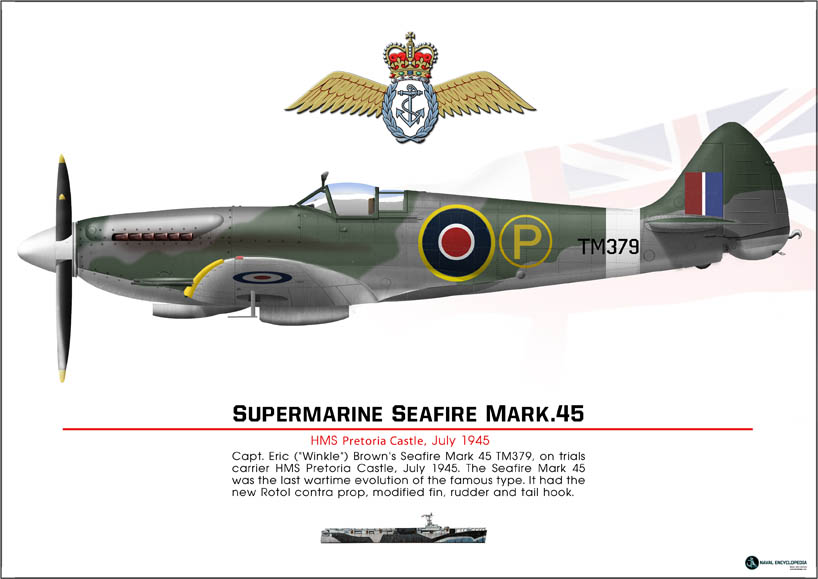
Seafire Mark 45; HMS Pretoria Castle
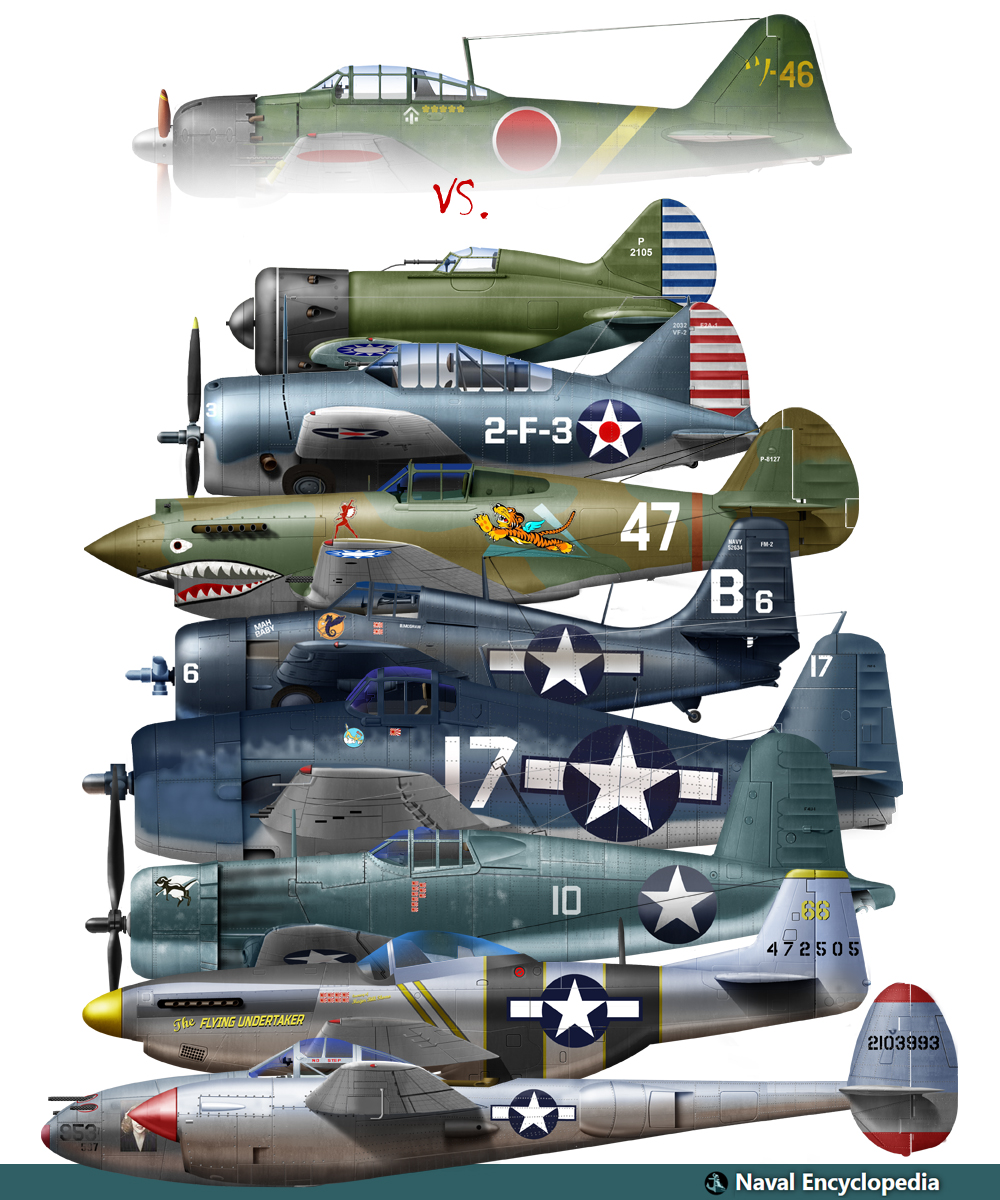
Zeros vs its aversaries
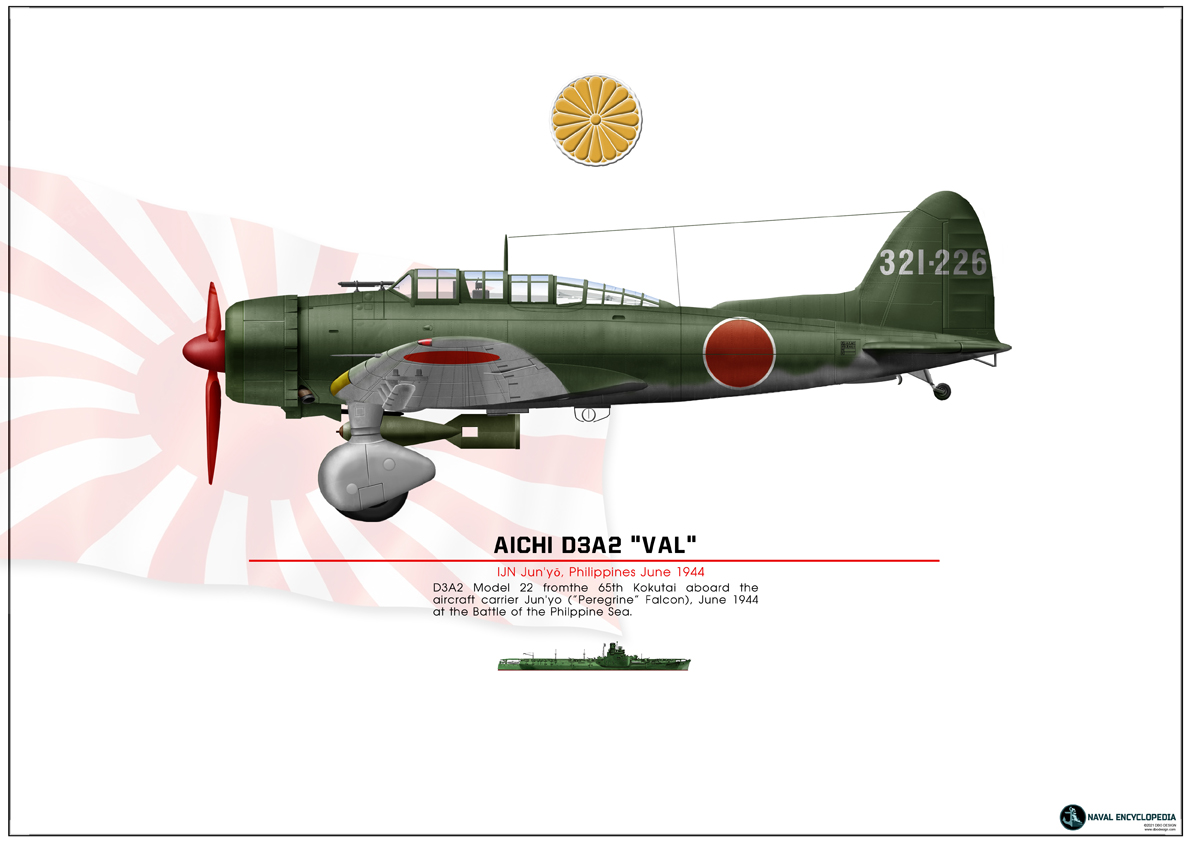
Aichi D3A “Val” Junyo
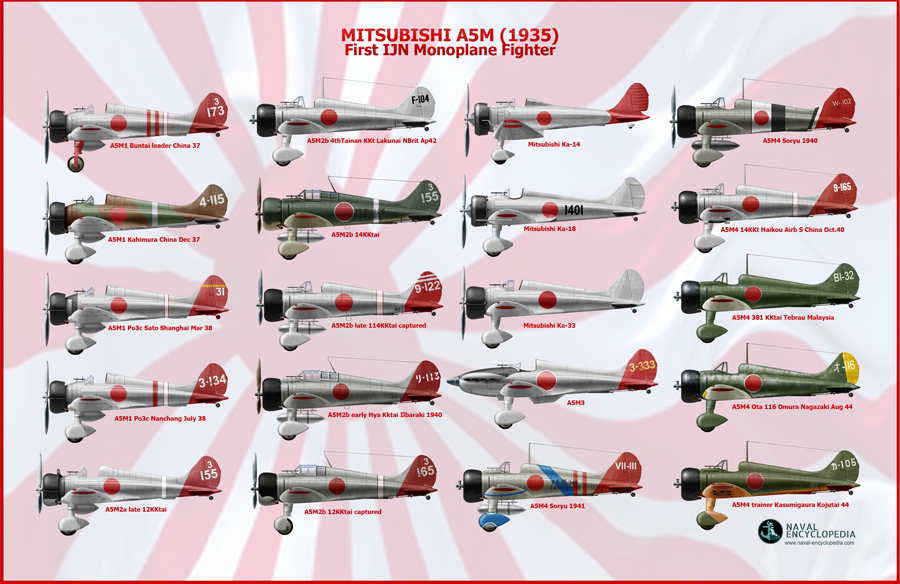
Mitsubishi A5M poster
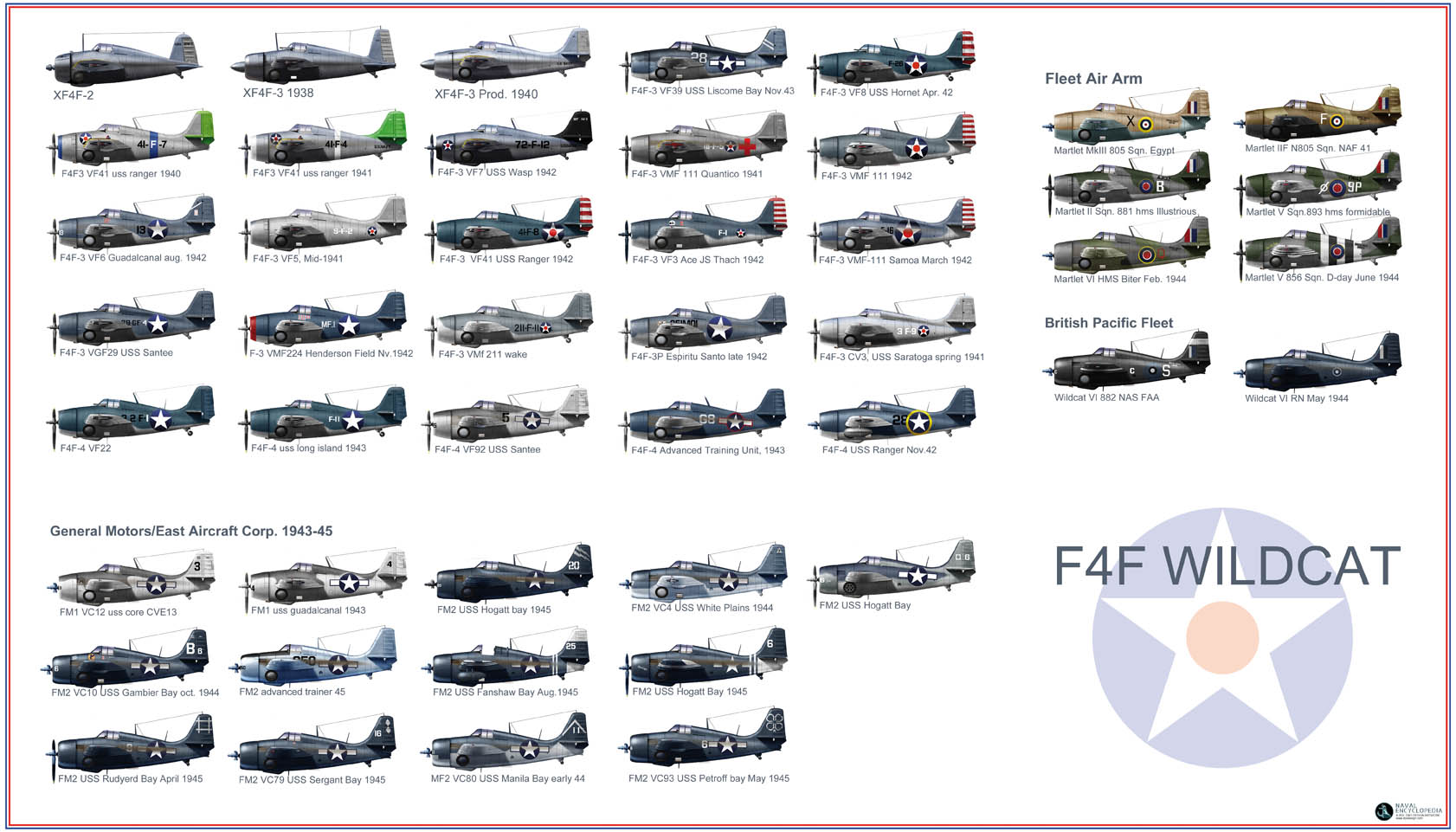
F4F wildcat
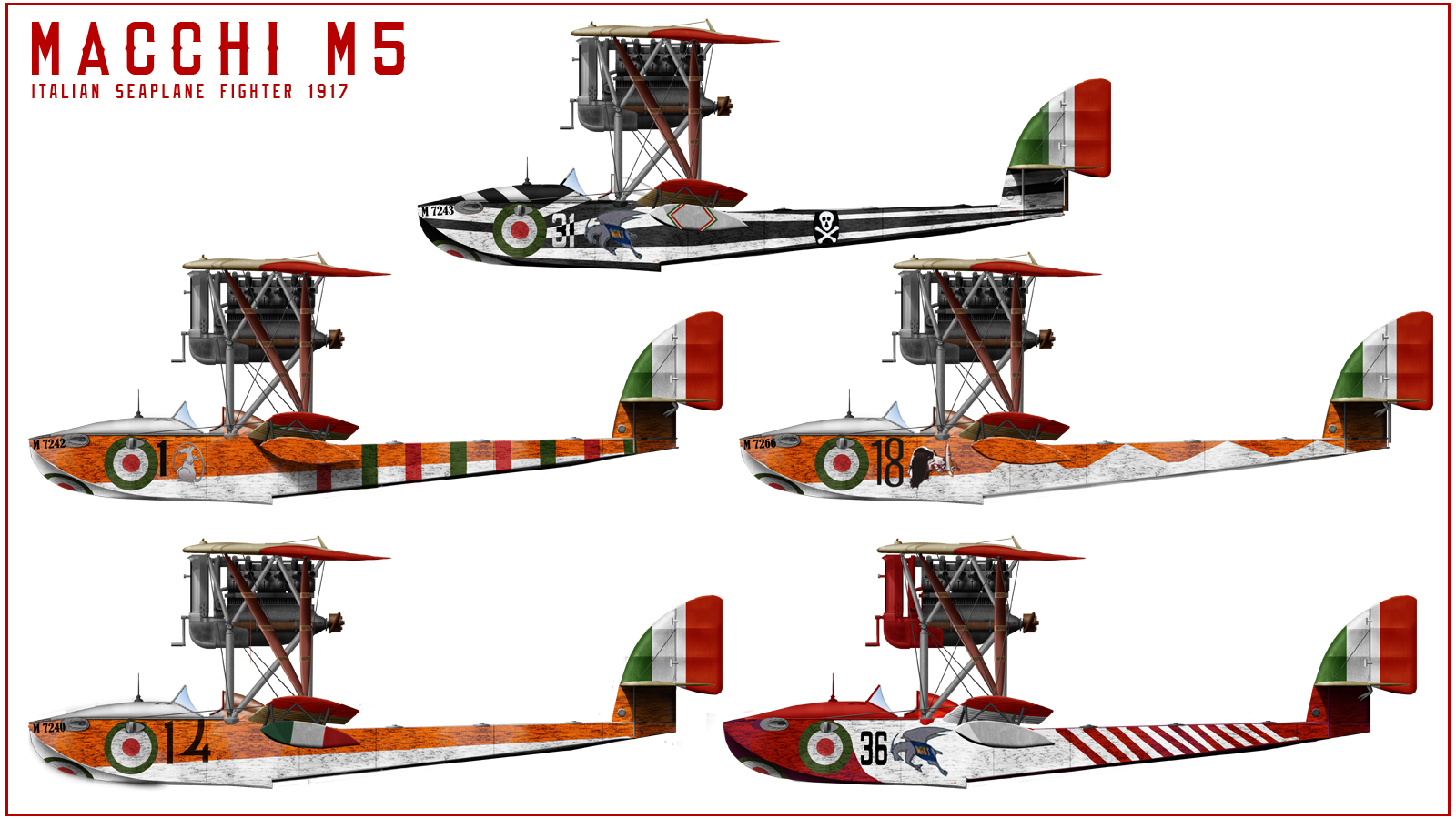
Macchi M5
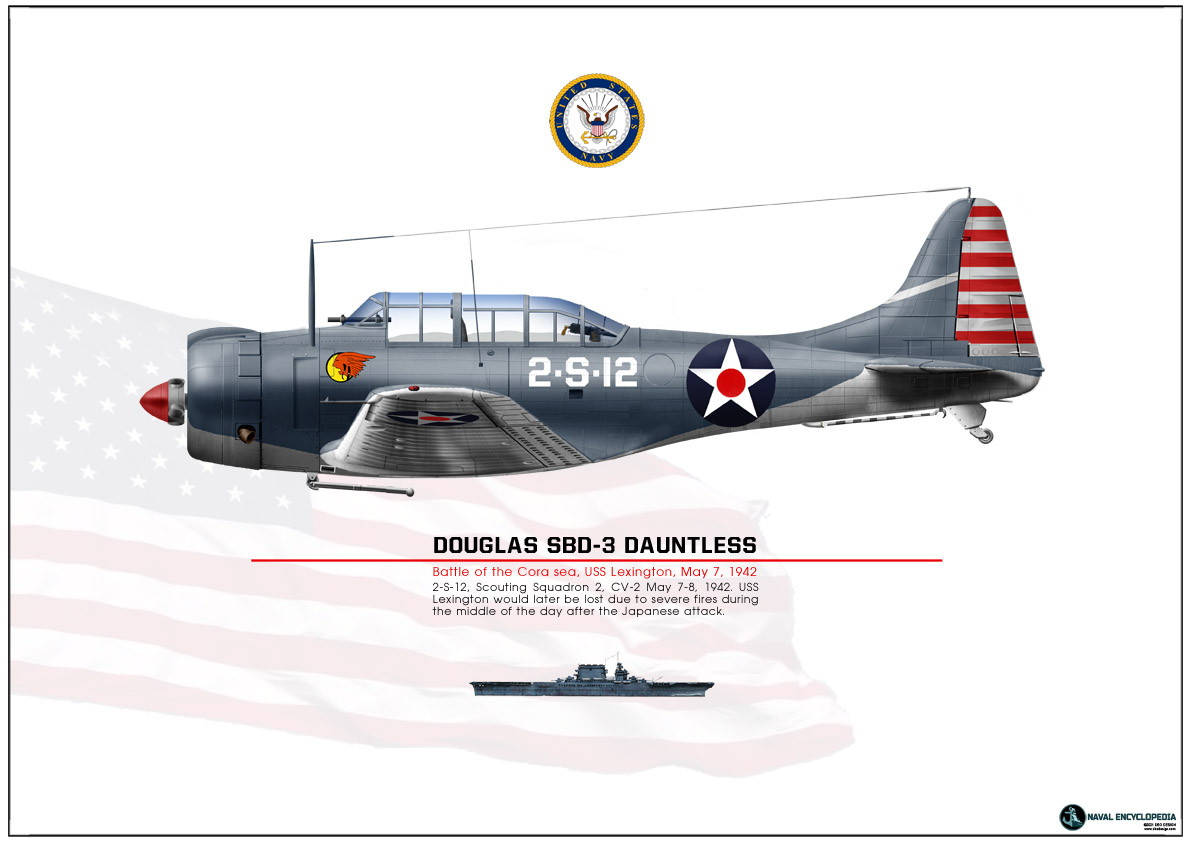
SBD Dauntless Coral Sea
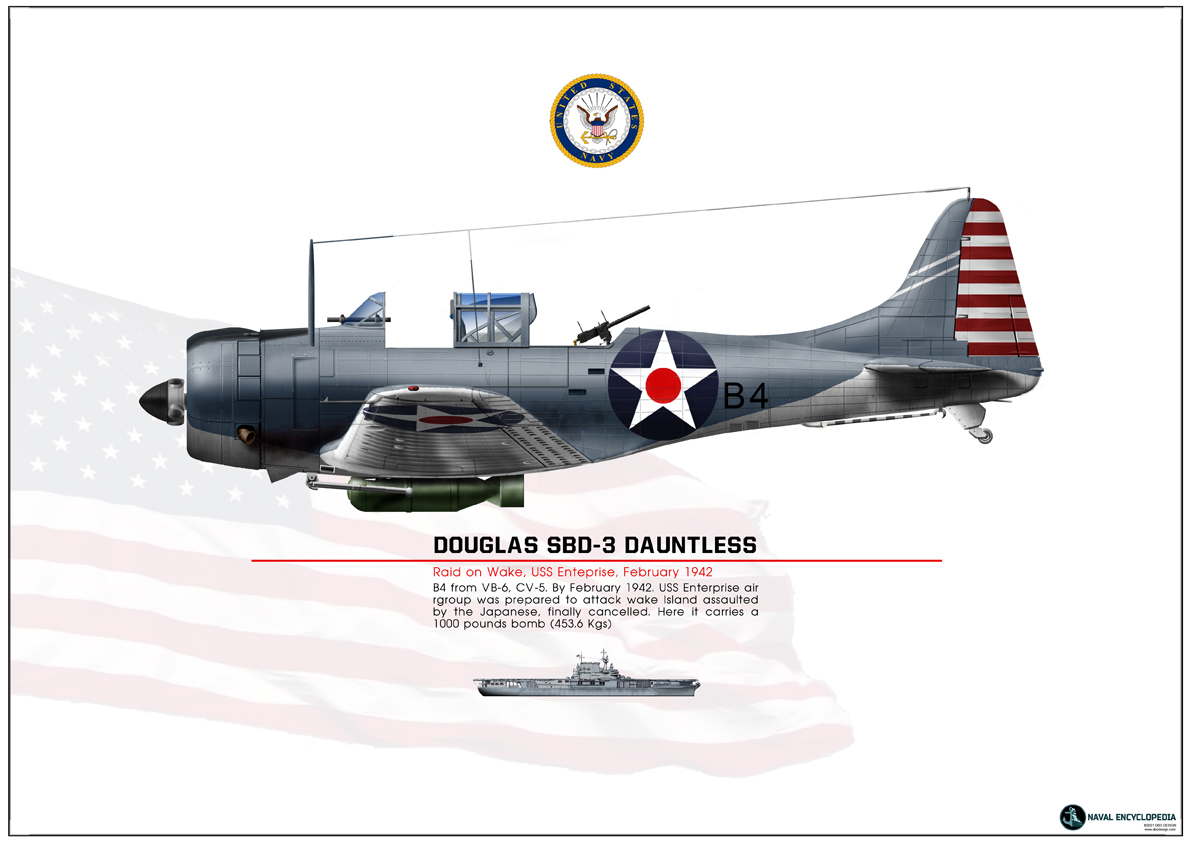
SBD Dauntless USS Enterprise
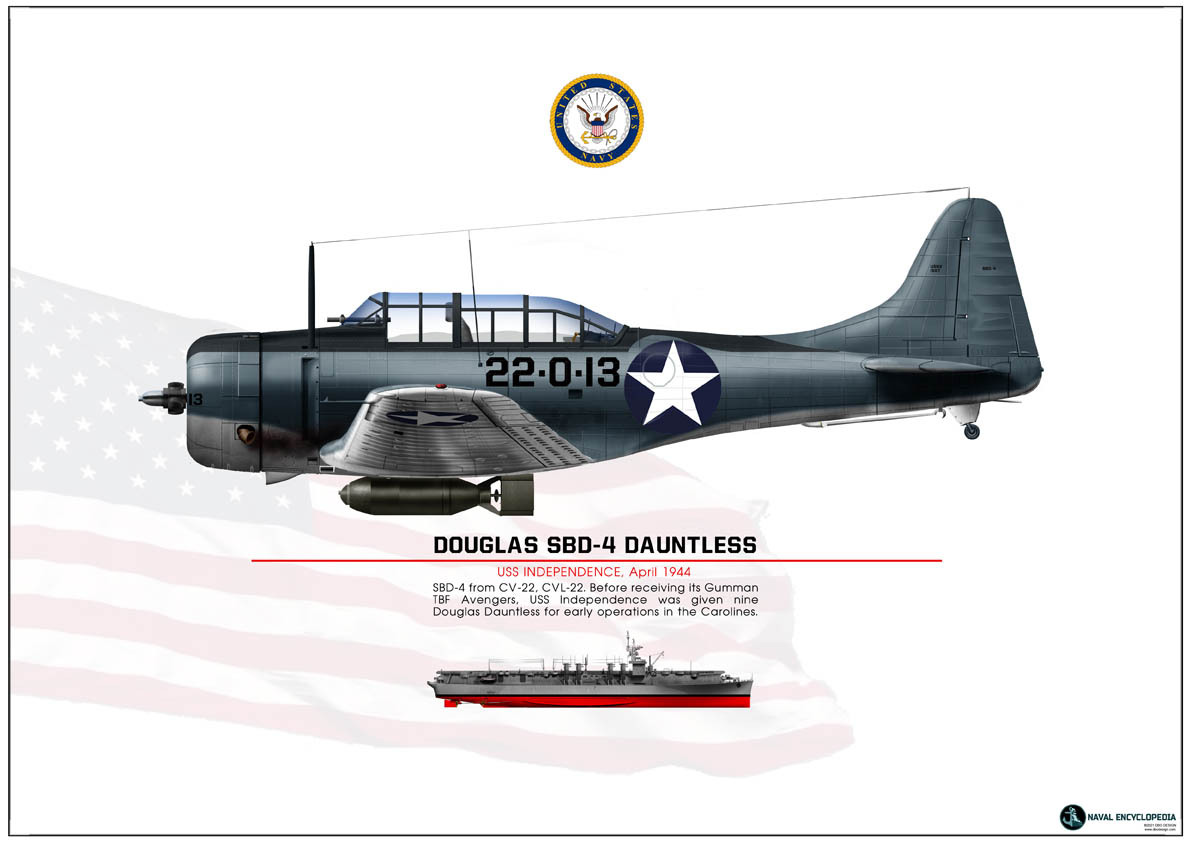
SBD-4 CV22